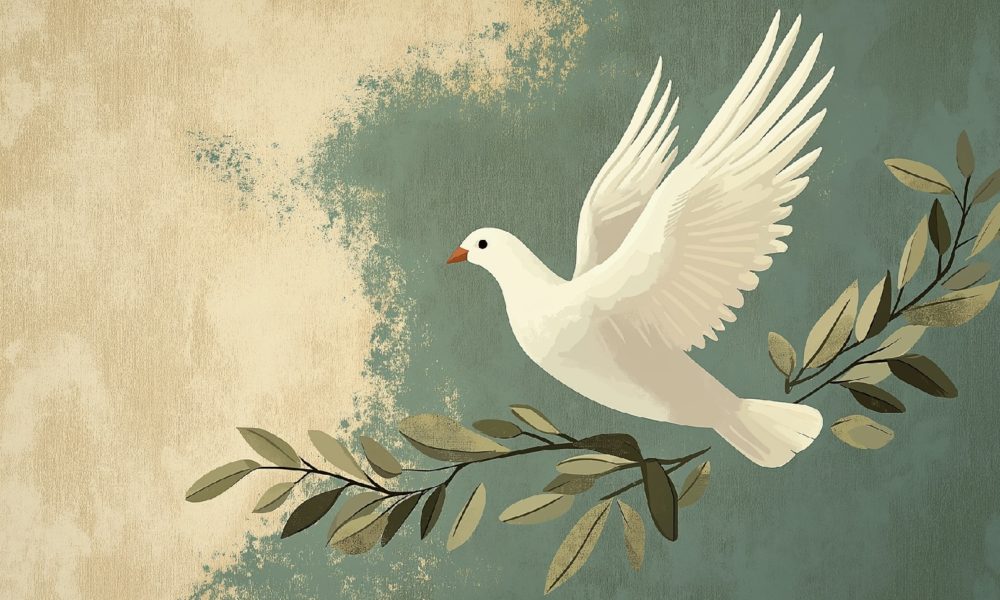
Peace in Our Time: Finding Hope on World Peace Day
What if, just for one day, the entire world pressed pause on conflict. Imagine a day dedicated to harmony, where weapons are silenced, and people everywhere turn their thoughts toward peace.
Today, September 21, we observe the International Day of Peace, a United Nations-sanctioned day dedicated to the ideals of global non-violence and the aspiration for peace among all nations and peoples. World Peace Day, as it’s also called, was first established by the UN General Assembly in 1981 and was reinforced in 2001 as a day of cease-fire and non-violence. It invites us to reflect on just how peaceful our world truly is today.
Peace Over the Ages: A Long Decline in Violence
It might surprise you to learn that, despite the conflicts dominating today’s headlines, humanity has made extraordinary progress toward peace. Consider this: in the 1940s, World War II claimed over 70 million lives. In the decades since, no war has approached that scale, and the number of interstate wars has steadily declined.
Steven Pinker, in his influential book The Better Angels of Our Nature: Why Violence Has Declined (2011), shows that rates of violent death have steadily declined over the past 10,000 years, with sharp drops since the Enlightenment. Today, large-scale wars between nations are far less common, genocides have decreased since World War II, and international institutions make war less likely by encouraging diplomacy and cooperation.
Even if modern wars can still be devastating, the share of the global population dying from violence is much lower than in centuries past. In earlier eras, warfare and homicide accounted for a much higher percentage of deaths. Today, those risks are a fraction of what they were.
This long-term decline is not meant to minimize today’s suffering, but it does offer hope: peace is not just possible, it is something humanity has been building slowly but surely over generations.
The Origins and Importance of Peace Day
Against this backdrop of long-term progress, the International Day of Peace reminds us to stay committed to continuing that trajectory. It was born from a desire to commit humanity to ideals – harmony, mutual understanding, and justice – and to invite everyone to pause and celebrate the possibilities of a kinder, more united world.
The observance is not just symbolic. Each year, the UN Peace Bell is rung at Headquarters, and global campaigns encourage everything from ceasefires in war zones to grassroots peacebuilding events. Reinforcing that ideal, the 1999 Declaration and Programme of Action on a Culture of Peace emphasizes that peace involves justice, tolerance, human rights, and cooperation, not merely the absence of conflict.
Peace Day is a reminder that peace is active, not passive. It requires choices, education, and compassion in everyday life.
But Make No Mistake: Conflict is Rising Again
Still, peace is fragile, and recent data points to unsettling reversals.
A recent study by the Uppsala Conflict Data Program (UCDP) found that 2024 experienced the highest number of state-based conflicts since 1946 – 61 of them – including 11 full-scale wars. Organized violence claimed nearly 160,000 lives globally.
Modern conflicts are also more complex. Civilian casualties are high, proxy wars are common, and humanitarian crises are widespread. For example, in Gaza, estimates indicate that civilians may represent a large majority of those killed, while reported combatants account for a smaller proportion.
So Are We Living in a Peaceful Time?
The answer is nuanced. In the long sweep of history, yes: fewer interstate wars, a greater expectation that peace is the norm, and a global moral framework that condemns violence all point to a more peaceful era. But the recent rise in conflicts shows peace is fragile and must be actively maintained.
Many observers put it this way: we are indeed living in a safer era compared to the past, but wars have shifted form – more localized, more asymmetric, and more complex – requiring new approaches to peacebuilding.
Why the International Day of Peace Matters Now
Given these trends, this day is more vital than ever.
- It reminds us that peace is a continuous project.
- It creates space for diplomacy, ceasefires, and reconciliation.
- It promotes education and intercultural understanding as tools to prevent future conflicts.
Looking Forward: Building a Culture of Peace
To create a more peaceful world, we can all take concrete steps in our daily lives and communities:
- Stay informed
Keeping in mind that violence has declined over centuries can give hope, while awareness of rising conflicts reminds us to stay vigilant. - Support institutions of peace
Good governance, robust justice systems, and the fair distribution of resources are critical to reducing conflict. - Promote dialogue
Peace education and intercultural understanding foster empathy and prevent disputes from escalating. - Take action
Whether volunteering, advocating for human rights, or helping those affected by conflict, each person can contribute.
A Moment of Hope
On this International Day of Peace, let us celebrate how far we have come. Humanity has shown that violence is not inevitable. Peace can grow, step by step, across generations. But let us also renew our commitment to keep moving forward, so that peace is not just a single day in September, but a way of life for future generations.

